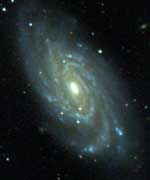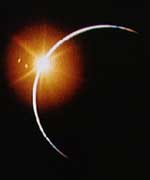This is a true story.
In 1972, Apollo astronaut Harrison Schmidt sniffed the air in his Lunar Module, the Challenger. “[It] smells like gunpowder in here,” he said. His commander Gene Cernan agreed. “Oh, it does, doesn’t it?”
The two astronauts had just returned from a long moonwalk around the Taurus-Littrow valley, near the Sea of Serenity. Dusty footprints marked their entry into the spaceship. That dust became airborne–and smelly.
Later, Schmidt felt congested and complained of “lunar dust hay fever.” His symptoms went away the next day; no harm done. He soon returned to Earth and the anecdote faded into history.
But Russell Kerschmann never forgot. He’s a pathologist at the NASA Ames Research Center studying the effects of mineral dust on human health. NASA is now planning to send people back to the Moon and on to Mars. Both are dusty worlds, extremely dusty. Inhaling that dust, says Kerschmann, could be bad for astronauts.
“The real problem is the lungs,” he explains. “In some ways, lunar dust resembles the silica dust on Earth that causes silicosis, a serious disease.” Silicosis, which used to be called “stone-grinder’s disease,” first came to widespread public attention during the Great Depression when hundreds of miners drilling the Hawk’s Nest Tunnel through Gauley Mountain in West Virginia died within half a decade of breathing fine quartz dust kicked into the air by dry drilling–even though they had been exposed for only a few months. “It was one of the biggest occupational-health disasters in U.S. history,” Kerschmann says.
This won’t necessarily happen to astronauts, he assures, but it’s a problem we need to be aware of–and to guard against.
Quartz, the main cause of silicosis, is not chemically poisonous: “You could eat it and not get sick,” he continues. “But when quartz is freshly ground into dust particles smaller than 10 microns (for comparison, a human hair is 50+ microns wide) and breathed into the lungs, they can embed themselves deeply into the tiny alveolar sacs and ducts where oxygen and carbon dioxide gases are exchanged.” There, the lungs cannot clear out the dust by mucous or coughing. Moreover, the immune system’s white blood cells commit suicide when they try to engulf the sharp-edged particles to carry them away in the bloodstream. In the acute form of silicosis, the lungs can fill with proteins from the blood, “and it’s as if the victim slowly suffocates” from a pneumonia-like condition.
Lunar dust, being a compound of silicon as is quartz, is (to our current knowledge) also not poisonous. But like the quartz dust in the Hawk’s Nest Tunnel, it is extremely fine and abrasive, almost like powdered glass. Astronauts on several Apollo missions found that it clung to everything and was almost impossible to remove; once tracked inside the Lunar Module, some of it easily became airborne, irritating lungs and eyes.
Martian dust could be even worse. It’s not only a mechanical irritant but also perhaps a chemical poison. Mars is red because its surface is largely composed of iron oxide (rust) and oxides of other minerals. Some scientists suspect that the dusty soil on Mars may be such a strong oxidizer that it burns any organic compound such as plastics, rubber or human skin as viciously as undiluted lye or laundry bleach.
“If you get Martian soil on your skin, it will leave burn marks,” believes University of Colorado engineering professor Stein Sture, who studies granular materials like Moon- and Mars-dirt for NASA. Because no soil samples have ever been returned from Mars, “we don’t know for sure how strong it is, but it could be pretty vicious.”
Moreover, according to data from the Pathfinder mission, Martian dust may also contain trace amounts of toxic metals, including arsenic and hexavalent chromium–a carcinogenic toxic waste featured in the docudrama movie Erin Brockovich (Universal Studios, 2000). That was a surprising finding of a 2002 National Research Council report called Safe on Mars: Precursor Measurements Necessary to Support Human Operations on the Martian Surface.
The dust challenge would be especially acute during windstorms that occasionally envelop Mars from poles to equator. Dust whips through the air, scouring every exposed surface and sifting into every crevice. There’s no place to hide.
To find ways of mitigating these hazards, NASA is soon to begin funding Project Dust, a four-year study headed by Masami Nakagawa, associate professor in the mining engineering department of the Colorado School of Mines. Project Dust will study such technologies as thin-film coatings that repel dust from tools and other surfaces, and electrostatic techniques for shaking or otherwise removing dust from spacesuits.
These technologies, so crucial on the Moon and Mars, might help on Earth, too, by protecting people from sharp-edged or toxic dust on our own planet. Examples include alkaline dust blown from dry lakes in North American deserts, wood dust from sawmills and logging operations, and, of course, abrasive quartz dust in mines.
The road to the stars is surprisingly dusty. But, says Kerschmann, “I strongly believe it’s a problem that can be controlled.”
Original Source: Science@NASA Story



